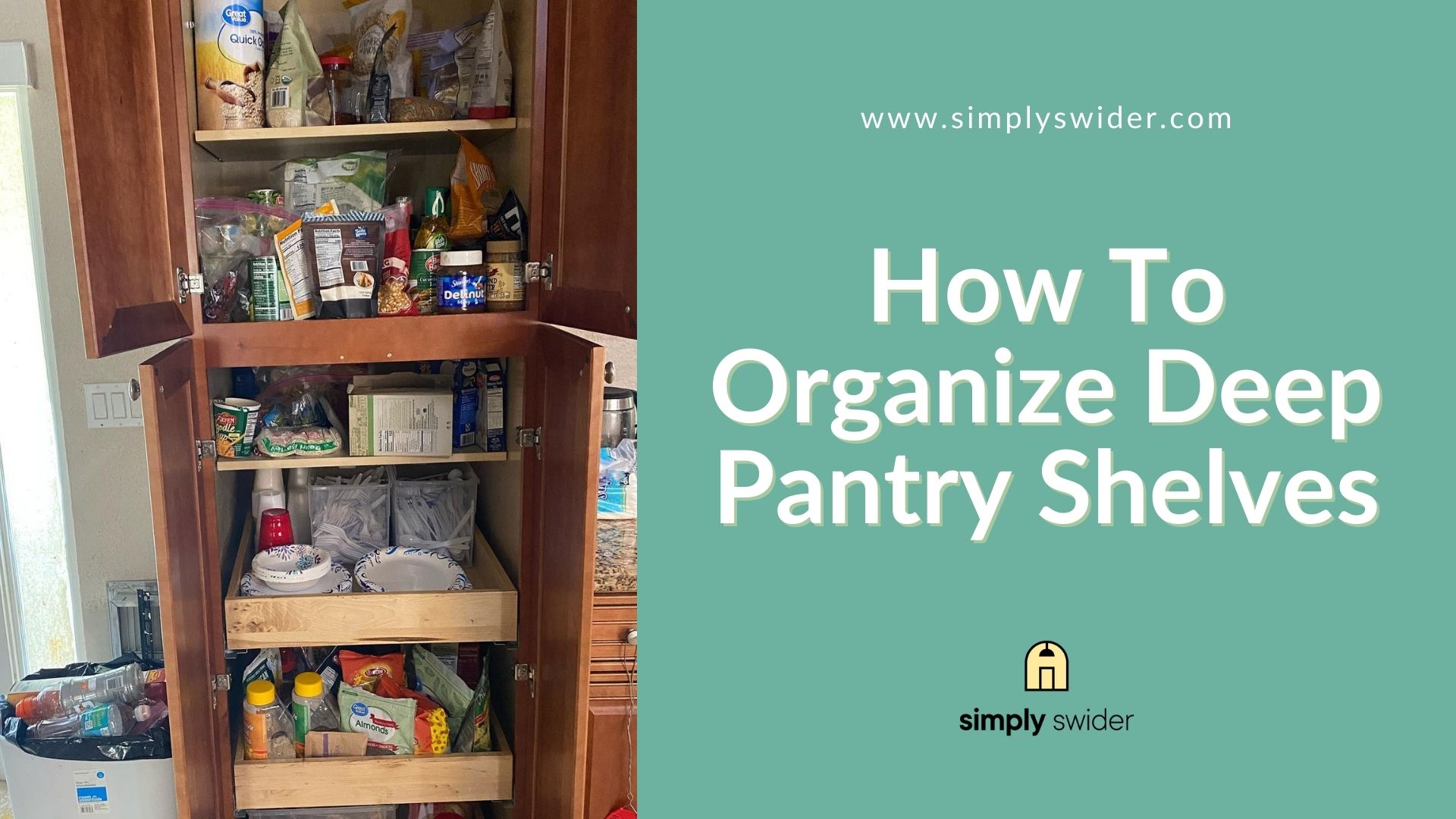Here’s the deal:
While having some extra space to stock food items is appreciated, deep pantry shelves can be a heavy chore to maintain.
As it happens:
Your stocked items could get buried or expired, meaning wasted food and money, both very unattractive concepts to homeowners.
To that end:
Here is a compilation of helpful tips for organizing your deep pantry shelves.
Table of Contents
How to Organize Deep Pantry Shelves
Before you start organizing your deep pantry, ensure it is fully stocked. After decluttering and cleaning the shelves, you should categorize and label the items, then place them in designated zones. Also, pay attention to how you arrange items by considering size, category, new stock, and expiry dates.
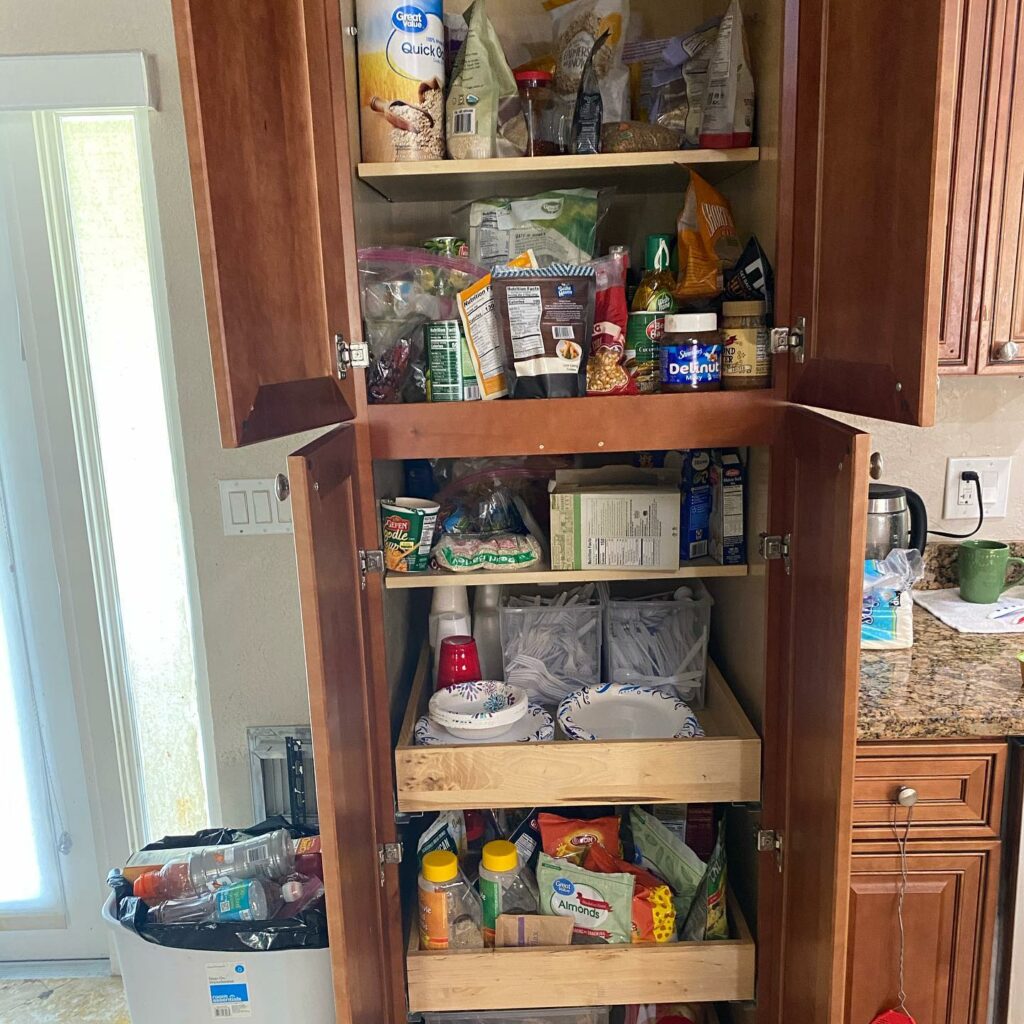
1. Declutter Your Pantry
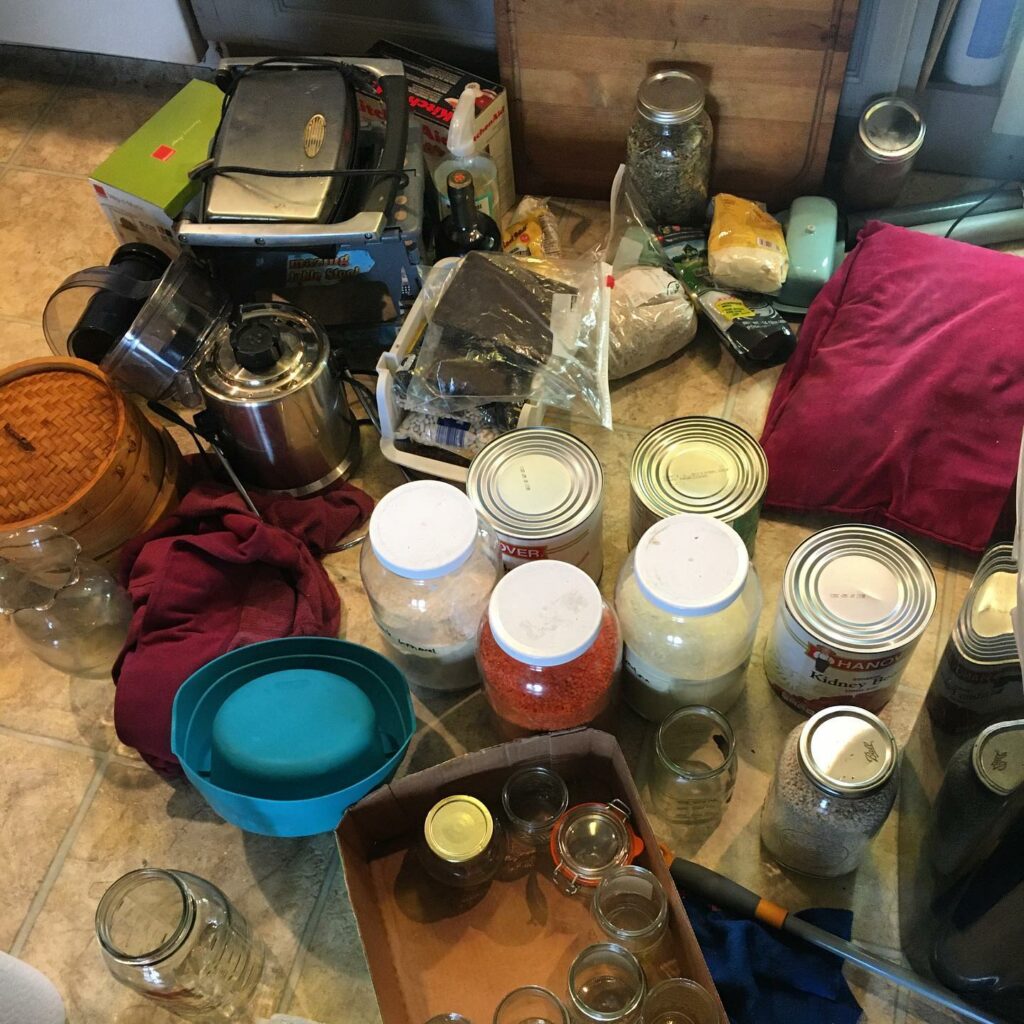
As expected:
The first step to take when organizing your deep pantry is decluttering. This step involves as much discretion as it does carefulness.
So:
You must carefully take everything out of your pantry and set them aside, possibly on the countertop or kitchen table.
This is where discretion comes in, as you’ll need to do some inventory on these items.
You see:
People often stock items in their deep pantry that they eventually won’t use. Plus, some of these abandoned food items could have sailed well past their expiry date.
Now:
Are there neglected food items in the deep corners of your pantry? Have you discovered expired packaged food or ingredients?
Throw expired items out and take care not to restock any neglected ones to prevent waste.
2. Clean the Shelves
After decluttering:
Cleaning the shelves is the next thing you want to do. It would be best to give your deep pantry shelves a thorough wipe-down before returning items.
As it happens:
The pantry doesn’t receive much attention during regular cleaning rounds because the shelves are fully stocked with food items.
Over time, it could get extremely dusty and dirty.
As such:
You should grab a vacuum to clear out debris and wipe the dust off the shelves and pantry items with a rag.
Also, make sure you pay attention to the deep corners of the shelves where dirt could have accumulated.
3. Categorize Your Items
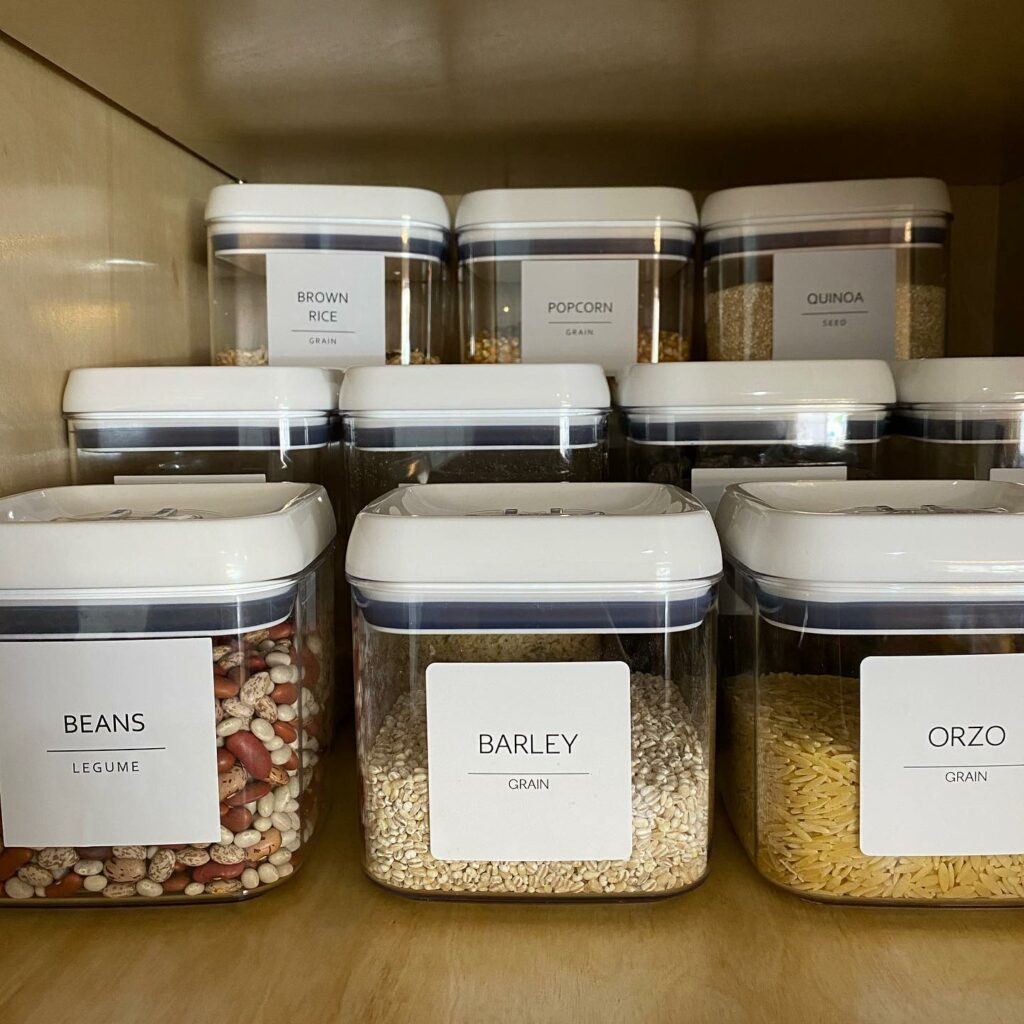
Now:
While your food items are still out on the countertops, divide them into categories based on similarity.
The thing is:
The nature of your categories is completely at the mercy of your discretion.
They could range from broader categories like grains, spices, or snacks to more specific categories like pasta, flour, or sugar.
Essentially:
Similar food items should be stored together in organizational baskets and containers.
Baking supplies like sugar and flour can go into clear containers that make them easy to stack and save space in your deep pantry.
Plus:
They help with visibility, as you can conveniently tell when you are running low on these ingredients.
In addition:
Matching bins and baskets would improve the aesthetic appearance of your deep pantry, making it look tidy and organized.
You’d also find it exceedingly helpful to label items and categories.
Here’s the thing:
Labelling would change your pantry organization game forever.
Not only does it help with the identification of items, but it also helps to sustain the organizational system.
You see:
When unloading groceries, you know exactly where to put your supplies and avoid the possibility of mixing up categories.
Plus, it’s foolproof because no matter who unpacks the groceries, your labels will guide them accurately.
4. Designate Specific Zones
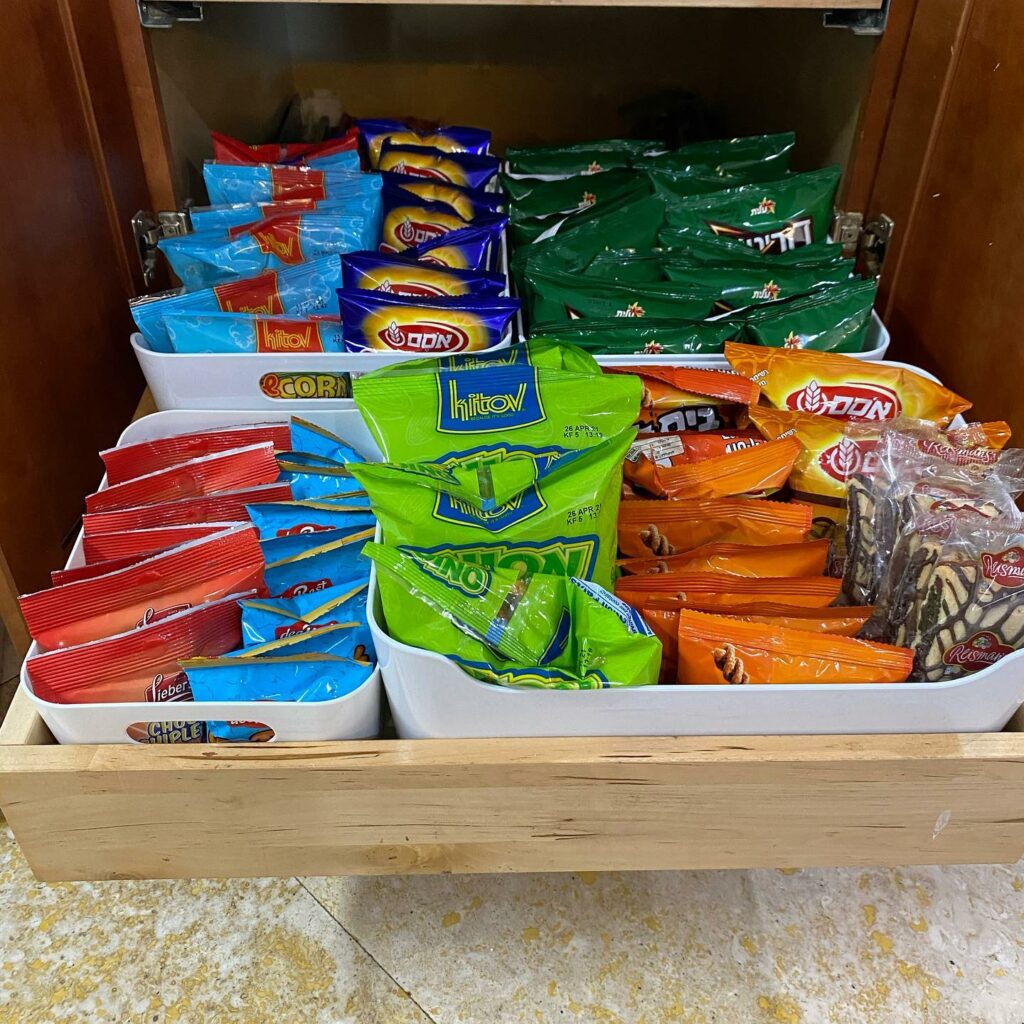
In addition to categorizing items:
You should designate specific zones in your deep pantry to store these categories.
Allocating zones for each category will help you know where to find stuff easily when needed.
For this reason:
It is necessary to have a fully stocked pantry before attempting to organize. You can’t allocate zones if you do not have an idea of how much food you ideally stock.
So:
If you typically stock more of a certain food category, like snacks, that zone will need to be larger to accommodate these items.
Also:
It would be helpful to label these designated shelf zones as well.
5. Rearrange Items on the Deep Pantry Shelves
Now:
You have categorized your items and designated spaces for them on the shelves. It is finally time to rearrange the food items on your deep pantry shelves.
Listen:
This step isn’t complicated; however, it requires that you consider accessibility, visibility, and stock age when placing items back on the shelves.
Regarding accessibility:
What items in your deep pantry does your household use on a daily basis? Sugar? Cereal?
You need to keep regularly used items close to the front of the shelf where they can be reached easily.
While:
You can place less frequently used items at the back of the shelf until they are needed.
Next:
You should consider the size of items when positioning items in their designated zones to improve visibility.
Remember, your pantry should be organized to aid efficiency in the kitchen.
You see:
If you have a deep pantry, you’d be doing yourself a disservice by using larger and taller items to obstruct smaller supplies.
This tip does not only apply to individual items; you can also organize categorized baskets and bins according to size.
Also:
When rearranging your deep pantry, always put new stock behind the old stock.
Why?
Moving older items forward puts items closer to expiration in the line of sight, so they’re consumed before the newly purchased items.
New items have a longer shelf life, so they can very well be placed at the back of your deep pantry shelves.
Note:
If you have a top shelf, it is a good idea to store your extra stock there for any possible contingency.
One more thing:
For mothers with little creepers, ensure food items you want to keep away from them are kept higher up the shelf than other items.
In contrast, if there are items you want your kids to be able to access without assistance, place them lower on the shelves.
Conclusion
Fundamentally:
Your deep pantry organization system must be efficient and bespoke for your needs, lifestyle, and habits.
You must also be able to maintain that system such that you can conveniently restock without having to deal with existing disarray.
As such:
Taking the time to declutter and optimize your deep pantry shelf space to your taste would make cooking and general chores much easier.
Follow these steps to organize your deep pantry shelves:
- Declutter your pantry
- Clean the shelves
- Categorize your items
- Designate specific zones
- Rearrange items on the deep pantry shelves
Now:
In addition to these steps, there are also very useful tips to take note of when organizing your deep pantry shelves.
These tips, including installing sliding drawers, are not necessary; however, they help you get the most out of your deep pantry.
So:
Tell us what you think! Did you try our guide? Please share your experience, additions and questions with us in the comment section below!
Frequently Asked Questions
There are a few key steps to take when organizing your food pantry with deep shelves.
You should start by decluttering and cleaning the shelves before categorizing and arranging items while considering their sizes and expiry dates.
To maximize space in your deep pantry shelves, you should install sliding drawers and hanging shelves.
Placing cans on risers and using a Lazy-Susan would also help accessibility and visibility.
If you have a deep pantry that is also narrow, you’d want to use baskets or organizers to store similar items on the shelves.
This way, you can optimize space and keep things easy to find and reach.
Really deep shelves can be awkward to get around; however, there is a way to use them comfortably.
You’ll need to follow tips to organize items for easy reach and perceptibility while paying attention to size, categories and expiry dates.
Experts have recommended that deep pantry shelves should have a depth of at most 12 inches.
If your shelves are installed deeper than that limit, your items may get buried and be difficult to access.

